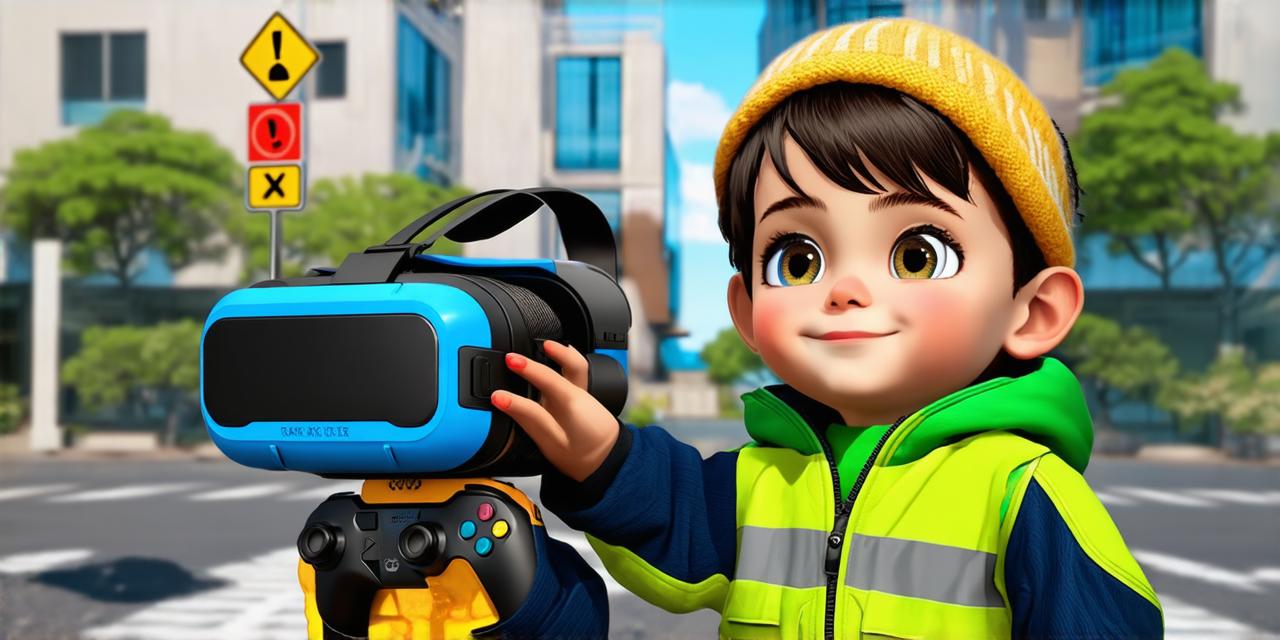<!DOCTYPE html>
Pros of Virtual Reality:
Improved Learning: VR can provide a unique and engaging learning experience that enhances knowledge retention and promotes active learning. For example, VR simulations can help children learn about history by allowing them to explore ancient civilizations and artifacts in a virtual environment.
Increased Creativity: VR technology encourages creativity by providing children with a platform to create and explore their own virtual worlds. This can lead to the development of new ideas and a greater sense of imagination.
Enhanced Social Interactions: VR can facilitate social interactions by allowing children to interact with others in a virtual environment. This can be particularly useful for children who have difficulty with social skills or who are unable to attend social events due to physical limitations.
Cons of Virtual Reality:
Physical Safety Concerns: VR technology can pose physical risks, including motion sickness, disorientation, and falls. Children may become dizzy or nauseous when using VR headsets, particularly if they are not used properly. Additionally, children who are not properly supervised while using VR may trip or fall, resulting in injuries.
Mental Health Concerns: Some studies have suggested that prolonged use of VR technology can lead to negative mental health outcomes, including anxiety, depression, and addiction. Children who become overly reliant on VR may experience isolation from the real world and struggle with social skills.
Developmental Concerns: The long-term effects of VR on children’s development are not yet fully understood. Some experts worry that excessive use of VR technology may lead to a lack of physical activity, which can have negative effects on a child’s overall health and wellbeing.
Factors to Consider when Determining Safety:
Age: The safety of VR technology for children depends largely on their age. Children under the age of 6 are generally not recommended to use VR headsets due to the risk of physical injury. For children aged 6-12, it is important to ensure that they are using the technology in a safe and supervised manner.
Usage Time: Prolonged use of VR technology can lead to negative effects on a child’s mental health and development. It is important to set limits on how long children are allowed to use VR each day.
Supervision: Children should always be supervised when using VR technology, particularly if they are under the age of 12. Adults should ensure that children are using the technology safely and not becoming overly reliant on it.
Real-Life Examples: One example of the potential risks associated with VR technology is the case of a young boy who fell into a virtual river while using a VR headset, resulting in injuries to his head and leg. This highlights the importance of proper supervision when using VR technology.
Another example is the case of a child who became addicted to a VR game, leading to social isolation and a lack of interest in other activities. This highlights the potential negative effects that excessive use of VR can have on a child’s mental health.
FAQs:
1. What age group should not use VR technology? Children under the age of 6 are generally recommended not to use VR headsets due to the risk of physical injury.
2. How long should children be allowed to use VR each day? It is important to set limits on how long children are allowed to use VR each day, particularly for children aged 6-12.
3. Should children always be supervised when using VR technology? Yes, children should always be supervised when using VR technology, particularly if they are under the age of 12.
4. What are the potential negative effects of excessive use of VR technology on children? Prolonged use of VR technology can lead to negative mental health outcomes, including anxiety, depression, and addiction, and may lead to a lack of physical activity, which can have negative effects on a child’s overall health and wellbeing.
5. What are some real-life examples of the risks associated with VR technology? One example is the case of a young boy who fell into a virtual river while using a VR headset, resulting in injuries to his head and leg. Another example is the case of a child who became addicted to a VR game, leading to social isolation and a lack of interest in other activities.
In conclusion, virtual reality technology has many potential benefits for children, including improved learning, increased creativity, and enhanced social interactions. However, it also poses physical, mental health, and developmental risks that need to be carefully considered. By understanding the pros and cons of VR technology and the factors that should be considered when determining safety, parents and caregivers can make informed decisions about whether VR is safe for children to use. It is important to ensure that children are using VR technology safely and in moderation, and that they are not becoming overly reliant on it at the expense of other activities.
